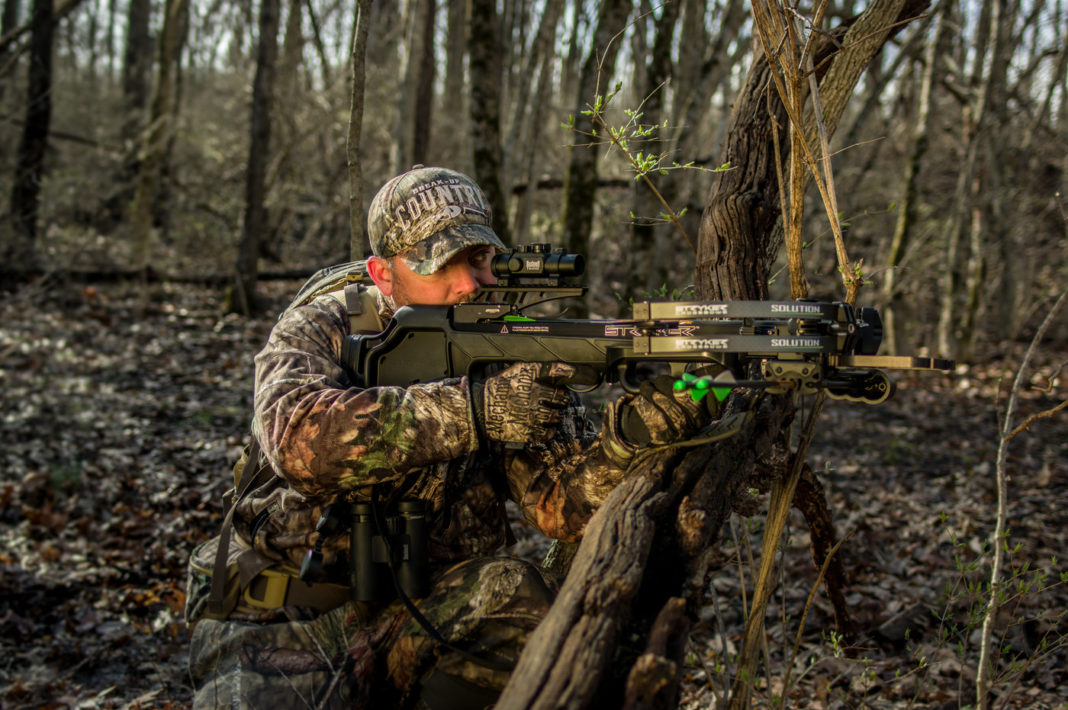A recent pre-rut whitetail hunt found me awake well before first light preparing to head to the deer woods. My perch for at least the first few hours of the day would be one that has allowed me to arrow mid-October whitetails the previous two seasons.
Hopefully, this year would be no different. The meteorologist warned of unseasonable warm temperatures for this time of year. With only a couple days left to hunt my home state of Illinois before I had to travel again, I would be in a tree even with temperatures reaching the high 70s.
Ten minutes before 8 a.m., I let an arrow fly and with a solid thud, knowing it would be an easy trail to follow to a nice Illinois whitetail. Once the deer was recovered my only concern was getting the meat cooled down as quickly as possible. Thank goodness for a friend with a walk-in cooler.
Even though the weather conditions were less than ideal, I managed to arrow a deer during part of the season that can prove to be magical. Add some tried and true techniques and hunting, the pre-rut could be your favorite time of the season, too.
Just about any year, you can find the first scrapes of the year in an area with oak trees producing a good crop. These are normally within 100 yards of a corn or bean field. As the acorns fall, deer will use this location as a staging area to eat the mast before moving into fields after dark.
If the crops have already been harvested, deer will still spend some time in the fields, but most of their time will be spent under the trees eating available mast.
If your scouting efforts revealed a ridge with oak trees that produce just an average crop of acorns, go there and hang a stand. If other food sources are scarce, deer will travel those ridges even more. Around mid- to late October, hunters will begin to notice fresh scrapes and rubs on ridges with a lot of deer movement.
As far as the rubs I see, they are found in two types of terrain: valleys and secondary points.
Valleys, sometimes referred to as draws or hollows with thick vegetation, has twice as many rubs that hollows with little vegetation. The brushy draws are a good place for a stand throughout the rut.
You might not be a weatherman but you need to keep an eye on the local weather., particularly the first two days after the first cold front of October blows through. Something about the temperature dropping several degrees overnight gets the deer moving. Bucks that have been bedded during warm days all of a sudden become active during the day.
If the cold front comes through late in the month, the better it is. The rut is not too far away and the bucks know it. They begin walking more during daylight, making scrapes and looking for the first does to come into estrus. When you know a cold front is on its way, start making plans to be hunting the first two days afterward.
A few days prior to and after Halloween is one of the best times to bowhunt. After keeping a journal for the past two decades, it is my conclusion that the full moon closest to the peak of the rut is better than the dark moon as far as more big bucks that are up and moving.
Stay in your stand for as long as you can, as many times as you can on those days surrounding Halloween. By doing this you could have a very good chance of arrowing a trophy buck.
A couple other pieces of advice I have is not to leave the grunt call at home during the pre-rut. Try and call every 30 minutes. A buck passing by that is able to hear the call might come by for a closer look.
Finally, the last 10 days of October into early November is the time to use a tarsal gland scent attractor. A couple scent wicks dipped in a good lure and positioned appropriately will have other bucks looking for the intruder.
Pre-rut is a great time to bowhunt monster whitetails. Big deer are on the move, making scrapes and spending more time on their feet during daylight. Get out and take advantage of it.



















![The Best Deer Camp Chili [VIDEO] Deer Chili Ingredients, Tomatoes, Chili Spices](/wp-content/uploads/2015/10/Deer-Chili-Deer-Camp-Recipe-218x150.jpg)
![How to Call Elk Early in the Season [VIDEO]](/wp-content/uploads/2016/08/byers003-218x150.jpg)




![Idiots Disturb Hunter: How Would You Have Handled It? [VIDEO]](/wp-content/uploads/2015/10/DSC00110-e1474487693878-100x70.jpg)
![Albino Buck Shocked to Shed His Antlers [VIDEO]](/wp-content/uploads/2015/10/AlbinoDeer-100x70.jpg)